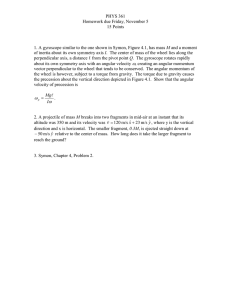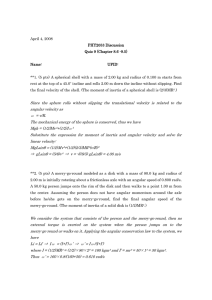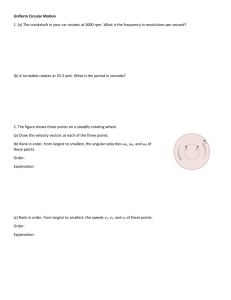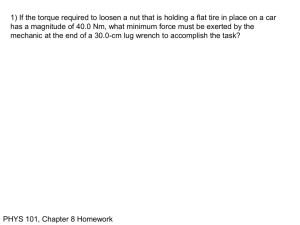PRS_W10D1
advertisement
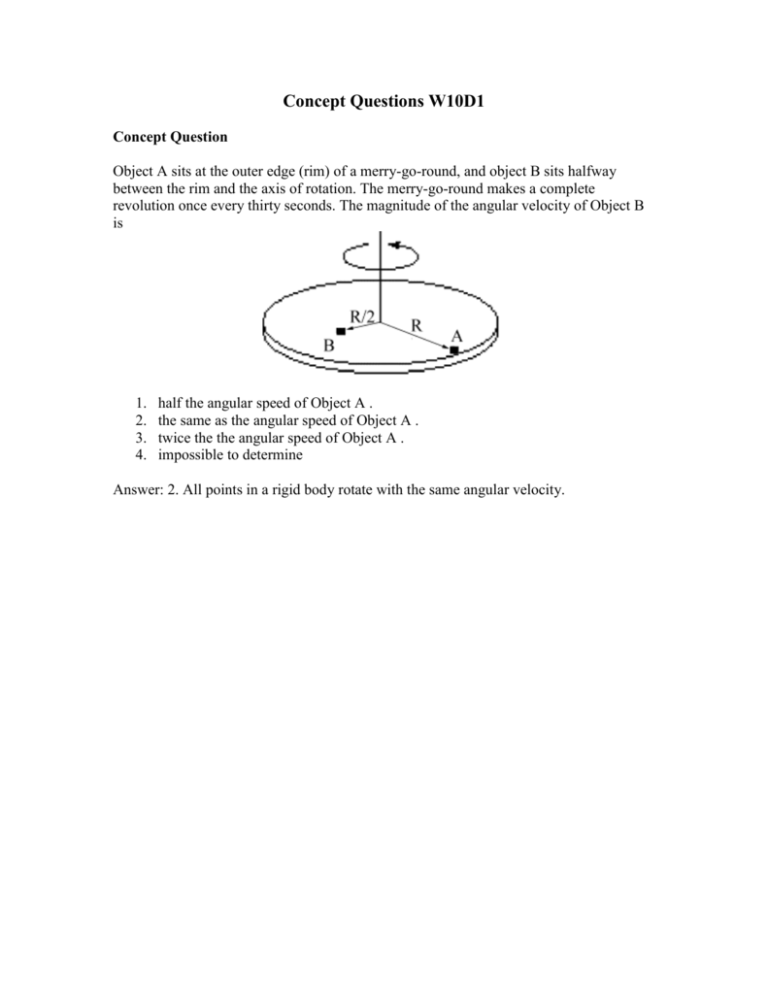
Concept Questions W10D1 Concept Question Object A sits at the outer edge (rim) of a merry-go-round, and object B sits halfway between the rim and the axis of rotation. The merry-go-round makes a complete revolution once every thirty seconds. The magnitude of the angular velocity of Object B is 1. 2. 3. 4. half the angular speed of Object A . the same as the angular speed of Object A . twice the the angular speed of Object A . impossible to determine Answer: 2. All points in a rigid body rotate with the same angular velocity. Concept Question: An object of mass m with velocity v moving in a straight line collides head on elastically with an identical object. The second object is initially at rest and is attached at one end to a string of length l and negligible mass. The other end of the string is fixed (at the point S). After the collision the second object undergoes circular motion with angular speed . The kinetic energy of the second object after the collision is 1. (1 / 4)ml 2 2 2. (1 / 2)ml 2 2 3. (3 / 4)ml 2 2 4. (1 / 4)ml 2 5. (1 / 2)ml 2 6. (1 / 4)ml Answer: 2. The collision is elastic and the objects have equal masses so after the collision the incoming object stops and the object on the string has velocity v . Since it is then constrained to move in a circle, the radially inward tension force of the string changes the direction of the velocity but not the magnitude. So the speed and the angular 1 velocity are related by v l . The kinetic energy is then K mv 2 (1 / 2)ml 2 2 2 Concept Question: A disk with mass M and radius R is spinning with angular speed about an axis that passes through the rim of the disk perpendicular to its plane. The moment of inertia about cm is I cm (1/ 2)mR2 . Its total kinetic energy is: 1. (1 / 4)mR 2 2 2. (1 / 2)mR 2 2 3. (3 / 4)mR 2 2 4. (1 / 4)mR 2 5. (1 / 2)mR 2 6. (1 / 4)mR Answer: 3. The moment of inertia about the center of mass of a disk about an axis perpendicular to its plane is given by I cm (1/ 2)mR2 . The parallel axis theorem states that the moment of inertia about an axis passing through a point on the rim perpendicular to its plane is given IP mR 2 I cm mR 2 (1 / 2)mR 2 (3 / 2)mR 2 . The kinetic energy is given by K 1 I 2 (3 / 4)mR 2 2 . 2 P
